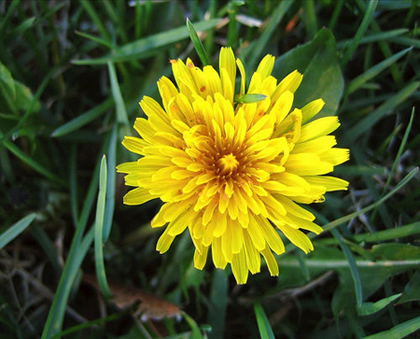
Spring is the season to welcome new growth, longer days, and lots and lots of sprouting green stuff. But wouldn’t it be great to actually be able to identify all of that new plant life in your neighborhood? And wouldn’t it be even better to be able to pick out those plants that are actually edible? Indeed, there are many wild edibles to be had in your own backyard, but it helps to know what they are and what they’re good for. Wild edibles are often the source of very valuable nutrients and can make a lovely, delicious, and unique addition to your diet.
Take a wild edibles walk: forage for food
The best way to learn about wild edible plants in your city is to find a local wild edibles walk. Try doing a search for a wild edibles walk in your area to see if any are offered. New York’s own Wildman Steve Brill offers walks through Central Park, and Slow Food Santa Cruz is actually offering a walk in the next few days.
Benefits of wild edibles
There are many benefits to identifying and eating wild edibles. Firstly, they can be found absolutely everywhere once you learn what they are. Wild edibles, which can include fruits, mushrooms, greens, and flowers, are free for the taking and are often more nutritious than many store bought fruits and vegetables:
For instance, dandelion, which you might think of as little more than a garden-variety weed is actually an incredibly nutritious wild edible plant. In a single hundred gram amount of cooked dandelion greens, there is 11,000 mg of Potassium, 18 mg of vitamin C and 42 mg of calcium.
Not only are there great health benefits, but learning the local edible plants in your neighborhood is an empowering experience. To be able to forage plants and know why they are beneficial will bring you closer to your local ecology and understanding ecosystems.

Try taking a wild edibles walk to learn about the power of wild plants! Happy foraging!
Not ready for stinging nettles and dandelions? Forage through our selection of natural foods…


Eco Living Advice
For any UK readers I would recommend Richard Mabey’s “Food For Free” which details all about foraging for native plants to eat. There are some surprising details such as that it is possible to tap birch for it’s sugary sap which you can eat like maple syrup, that you can eat beech leaves raw in a salad and that a plant called sorrell which is found in woods has a firey, peppery taste and can be used like rocket. Loads of new things to try 🙂
Nicolas from simplegreenaction.ca
Great blog post! I’m sure it willl inspire lots of people to eat right and in a greener way!
Nicolas
simplegreenaction.ca team
Taylen
nice! who knew such good eats were all around!
Wayfaring Wanderer
I was recently introduced to the wonders of dandelions, and I’m hooked!!! How luck am I that my yard is covered with them 😀
I did a post about things you can do with dandelions last week that may be of interest.
Read more @ Wayfaring Wanderer: 10 Things You Can Do With Dandelions
steven
hi, i am a local hiker(santa cruz county) and couldn’t make the talks, but would love to get a list of edibles!!! thanks, steven
Alice
I agree — wild food is superior on so many different levels.
You might be interested in my new facebook group called Wild Green Smoothies. The group is a place for people to share knowledge about wild plants, including wild greens, wild fruit and other wild edibles. It’s also a place to share raw recipes using wild ingredients, especially (but not limited to) green smoothie recipes.
In case you’re wondering, green smoothies are blended leafy greens with fruit. The taste of the fruit dominates the greens, so if made with the right ingredients, green smoothies are delicious and offer tremendous health benefits. Even better than cooking the dandelion 🙂
Whether or not you consume green smoothies, the Wild Green Smoothies group is a great place to share knowledge and healthy raw recipes as well as to connect with like-minded people.
Link: http://www.facebook.com/groups/228529537184607/